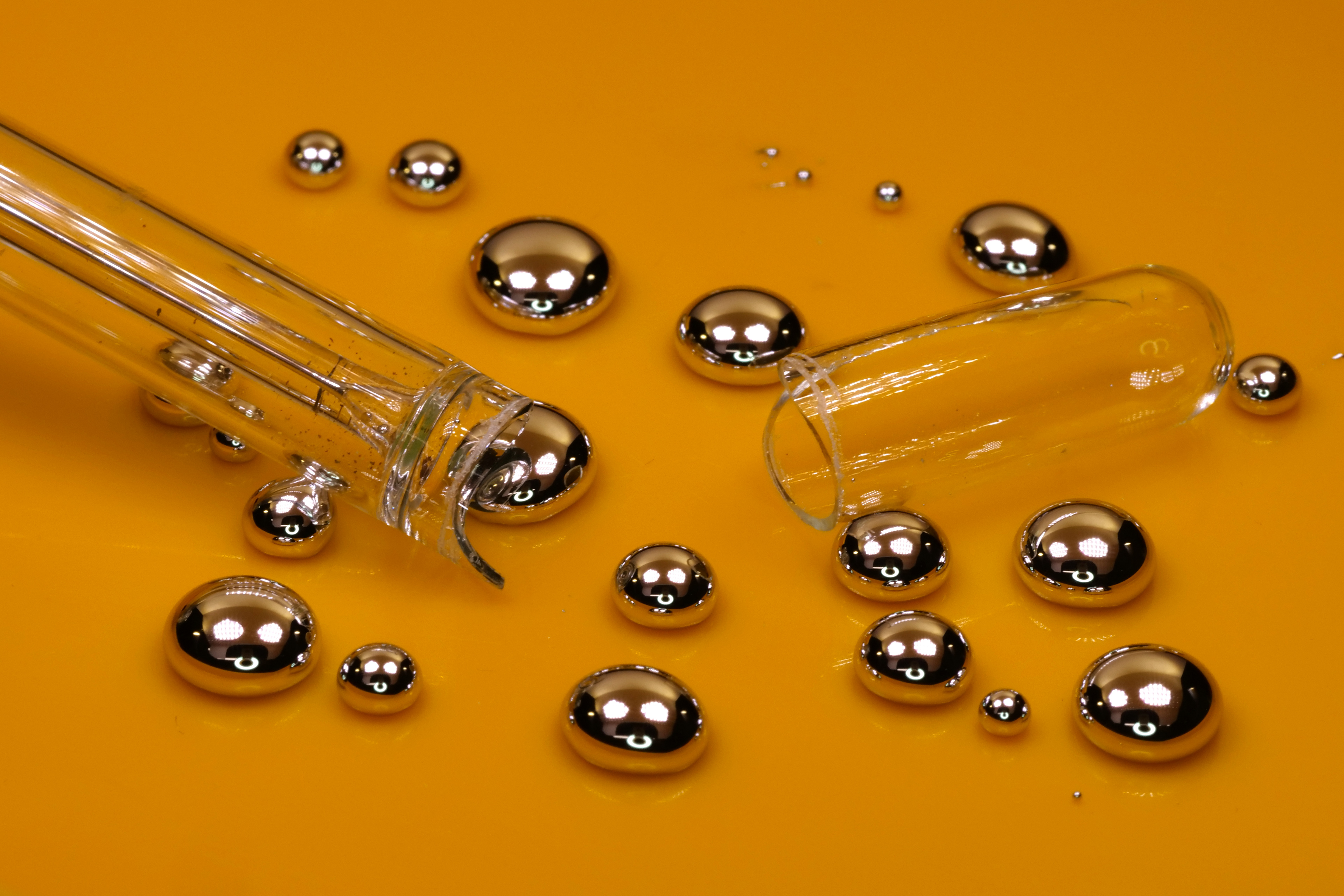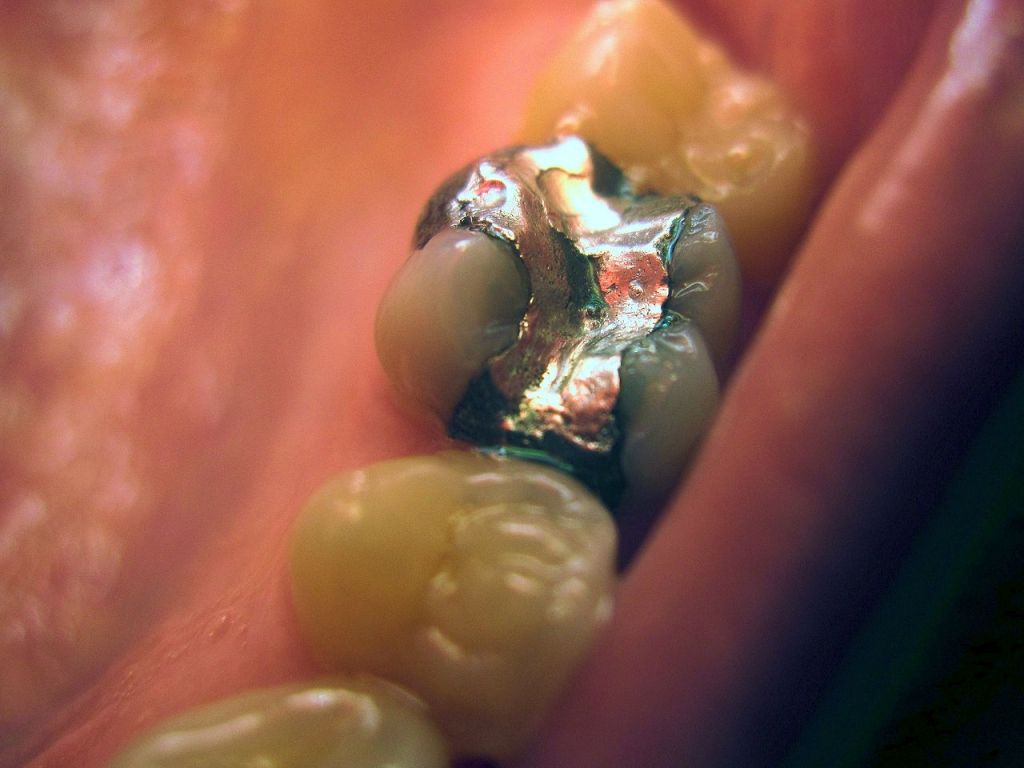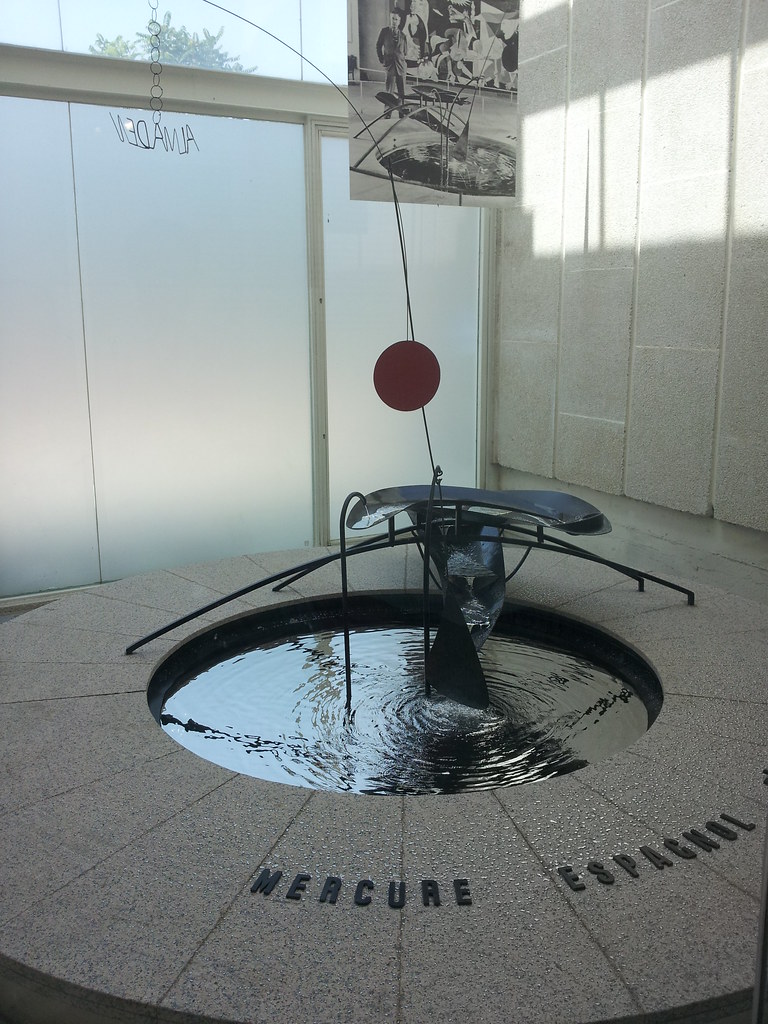


Clockwise from left: Some blobs of mercury (from Wikimedia Commons), mercury as it appears in the periodic table, a thermometer filled with mercury (from Pikrepo).
The planet? The God? Freddie? Where did the word mercury come from? Well I don’t want to keep you hanging: it’s the God. But why Hg? That is from the Latin word hydrargyrum, which means “water-silver”, referencing the unique property that mercury has as the only metal that is liquid at room temperature.
So why is mercury a metal liquid? It all comes down to electrons. Most metal atoms when they come together readily share their outer electrons with each other, leading to a nice regular structure of atoms with electrons floating around, holding the positively charged nuclei together. However mercury has a much tighter hold on their outer electrons, meaning they don’t share them amongst atoms. This means that the mercury atoms don’t hold together in a regular structure, instead slipping around each other in a less regular liquid form.
Mercury has been in use since at least Ancient Egypt, with evidence of the liquid metal found in tombs. It is believed that ancient uses for it was in cosmetics and medicine, particularly in the form of the mineral cinnabar (mercury sulphide), with evidence in ancient Greece, Rome and China. Alchemists also loved mercury, considering it to be the metal from which all other metals are formed through adding varying amounts of sulphur.

Mercury has had plenty of uses which have subsequently been recalled or replaced due to the toxicity that comes from too much of the element. Even in the 19th century mercury was put forward as a “cure all”, claiming to work on headaches, constipation, teething and lung problems. The most famous mercury use was in thermometers, due to mercury’s very linear relationship between the temperature of its environment and how much it expands, although more modern thermometers will use dyed ethanol instead. One way to make a more regular structure of mercury is to alloy it with other metals, in what are known as amalgams, of which one of the more common uses was as dental fillings, due to its malleable but still solid shaping. Evidence of dental amalgams date back to the 7th century in the Tang Dynasty. Nowadays safer concentrations of the mercury compound thiomersal are used in vaccines to prevent pathogens growing in the medicine.

A slightly stranger use of mercury is in a process called carroting. This is when a solution of mercuric nitrate was used on animal pelts in order to produce high quality felt for hats between the 1600s and 1900s. The treatment would turn the thinner fur at the sides orange, hence carroting. This often resulted in hat-makers getting mercury poisoning, and with the symptoms of this including memory loss, hallucinations, speech/sight/hearing impairment and anxiety, this is thought to be the origin of both the phrase “mad as a hatter” and the mad-hatter from Lewis Carroll’s Alice in Wonderland.
So that’s mercury! A final interesting thing is that mercury was often used for decorative pools, and potentially even divination due to the mirror-like liquid. This inspired a fountain of mercury to be made by artist Alexander Calder in 1937, which can be seen today in Barcelona.


2 thoughts on “Day 54: Mercury”